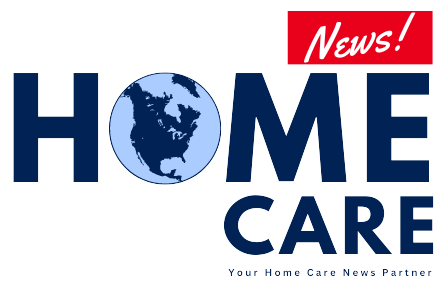As healthcare organizations prepare for the new year, their concerns may go beyond what's on the financial statements. In the webinar, “Year-end Accounting and Audit Update for Healthcare Organizations,” Forbis Mathers explored several topics of interest to the healthcare industry, including cybersecurity and what to expect from Washington after last year's election. This article provides some important insights for providers to keep in mind.
Risk-sharing arrangements
More entities are entering into risk-sharing agreements. These include agreements in which a health care entity receives payment in exchange for an obligation to provide and/or assume financial responsibility for health care services to a specified eligible beneficiary. It is important that the organization entering into the contract communicates with the accountant to ensure that the arrangement is properly evaluated. When considering which accounting model to use, companies should refer to Accounting Standards Codification (ASC) 815, Derivatives and Hedging. ASC 460, Assurance. or ASC 606, Revenue from Contracts with Customers.
Energy Service Agreement (ESA)
Another arrangement that is gaining popularity among healthcare providers is the ESA. Under the ESA, a special purpose entity (SPE) is created and the debt remains in the SPE, allowing the provider to avoid carrying the debt on its books. This arrangement is structured so that SPEs are not integrated. These arrangements continue to evolve and accounting treatments may vary by provider. Companies considering an ESA should ask questions such as:
Is there a lease component? In some cases, the provider retains the underlying asset, but in other cases it may be leased to the SPE, which could result in accounting differences. Who gets the excess reserves? Does your organization hold them?
Environmental, Social and Governance (ESG) Report
Healthcare organizations may not be SEC registrants, but they should understand ESG, especially what states require. For example, California requires greenhouse gas (GHG) emissions and climate risk reporting for organizations operating in the state that meet certain revenue standards. In New York State, hospitals can reduce the cost of workers' compensation claims if they have programs in place to address greenhouse gases. By the fourth or fifth year of both programs, there will be reporting requirements that also require an audit.
Student financial aid and related party transactions
Healthcare providers with nursing schools and receiving student financial aid funds should be aware of the new rules that went into effect on July 1, 2024. Strict disclosures are required, including major donors and executives affiliated with financial institutions. The Financial Responsibility Supplement must be included in the audited financial statements and must contain the information for calculating the composite score ratio. If applicable, we recommend that you submit a separate report with your eZ-Audit filing containing disclosure information.
Employee Retention Credit (ERC)
The ERC is available for most of 2020-2021 and provides refundable tax credits to help businesses keep their employees employed during the COVID-19 pandemic. Last year, the IRS issued 28,000 denial notices for $5 billion in refund claims that were “likely to be unfair.” The IRS later indicated that up to 10% of the letters may have been in error. The IRS has resumed refunding 400,000 low-risk insurance claims after a long hiatus. Some organizations may have applied in good faith without being sure whether they met the criteria. In these situations, companies may not want to include ERC funds in their income until they pass an audit or further guidance is issued.
Single audit update
Providers should note that the annual threshold for federal expenditures requiring a single audit has increased from $750,000 to $1 million, effective October 1, 2024. Organizations that fall below this standard will not be subject to audit. In addition, the award threshold for Type A programs increases from $1 million to $34 million to $1 million. In addition, the overhead rate has increased from 10% to 15%.
The Office of Inspector General and the Health Resources and Services Administration have been auditing organizations that received Health Care Provider Relief Fund funds meant to support health care providers during the pandemic. We've seen random audits of various providers across the country. Auditors should look at the calculation of revenue losses, particularly how they were recorded, how allowances for loan losses and contractual provisions were determined, and how they are managed to avoid a “double dip.” is focused on.
Additionally, some providers received letters from the Center for Homeland Security Operational Analysis reviewing FEMA benefits for duplication, specifically reimbursement from other sources.
cyber security
The healthcare industry has been the most affected by cyberattacks for the past 14 years in a row, and providers store valuable data, including the personal information of patients and employees. Some malicious actors use blackmail and extortion by threatening to release medical records. Outdated technology caused by resource and financial constraints can create vulnerabilities for healthcare organizations.
Disruptions caused by cyberattacks can last at least 30 days, so organizations should consider how to avoid 30-day disruptions while continuing to care for patients and access critical data. In addition to policies and procedures, providers should test their readiness by emulating scenarios and simulating what the response will be.
Perspective from Washington DC
When President Donald Trump's administration takes office this month, it reinstates many policies from the first Trump administration that were reversed by President Joe Biden's administration, including the reinstatement of short-term, limited-time health insurance that provides 12 months of coverage. likely to be issued. .
CMS is also expected to give states more flexibility in how they manage their Medicaid programs. Governors can take measures such as covering costs and implementing various qualifications and registrations for renewal processes.
The Trump administration could impose tariffs of 10% or more to increase revenue, potentially impacting health care items. Even if certain categories of healthcare products are excluded, supply chain costs may still be affected.
Forvis Mathers can help.
Forvis Mazars provides assurance, accounting, tax and consulting services to hospitals and health systems. If you have any questions or need assistance with any of the topics covered in this article, please contact the experts at Forvis Mazars.

